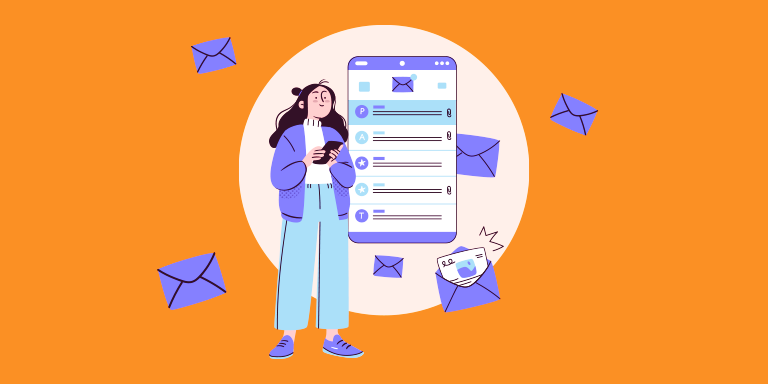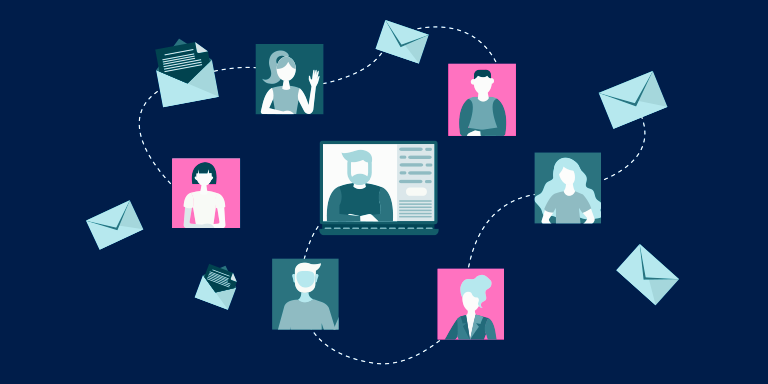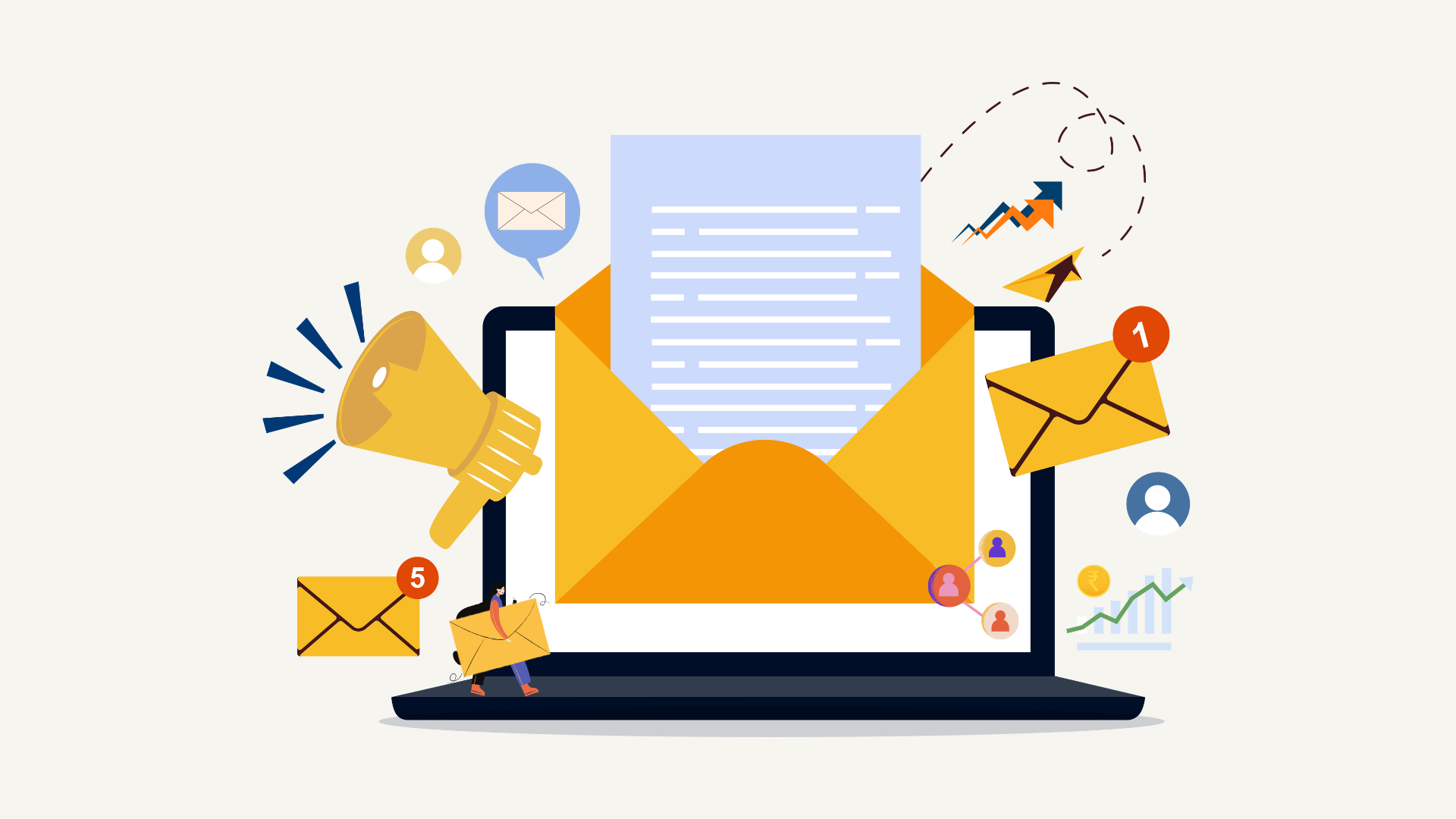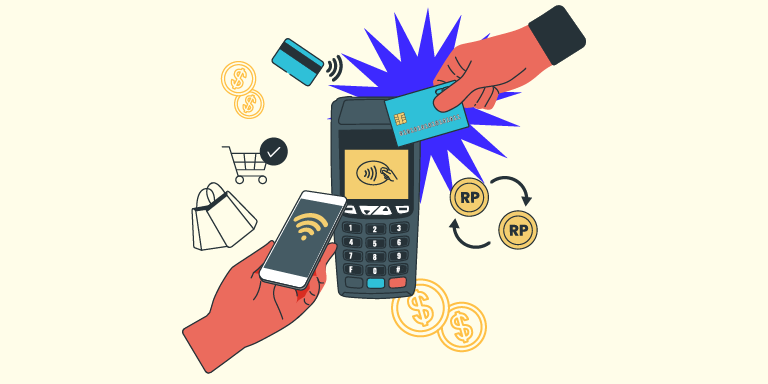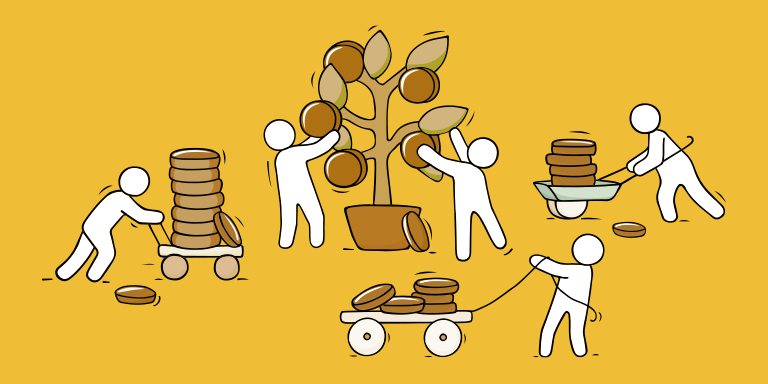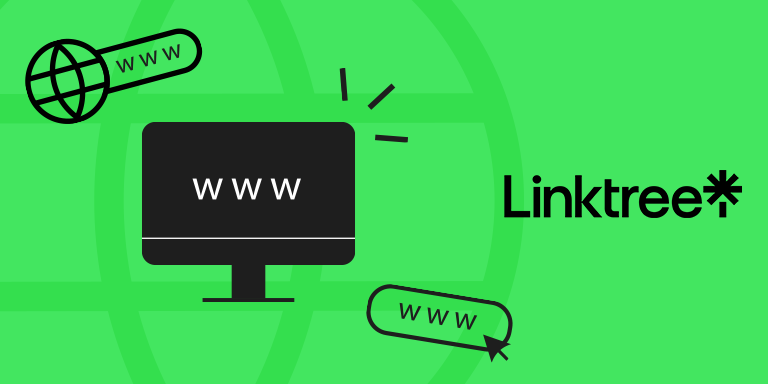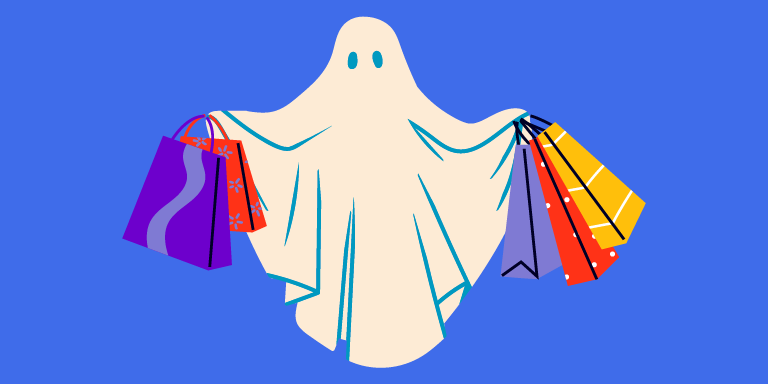I know writer’s block all too well. But even if you’re not a writer for a living, you’re probably familiar with it too. Especially if you’ve ever tried to maintain a regular newsletter for your business, coming up with new content every week can leave you feeling like this:

You might even be tempted to skip sending emails entirely unless you have a big sale or product launch going on. Big mistake. Why? If you wait two months to send an email to your list, and that email is to promote a new product, a few things might happen:
- The recipients are unlikely to remember who you are.
- You’ll get a high number of unsubscribes.
- You’ll have poor conversion rates (because you haven’t built a relationship with your subscribers).
Here’s the thing: Not every newsletter you send should push for a sale. You should first seek to provide value to your customer to cultivate your relationship. And while it can be a lot of pressure to come up with something your subscribers will like, the good news is, you don’t need to reinvent the wheel. There are plenty of newsletter templates that will provide a framework you can build upon each week.
If you’re stuck on what you should be emailing to your list, here are some newsletter ideas you can use, plus newsletter examples from businesses that are rocking their own email marketing. These should keep you stocked up on ideas so you can cultivate a strong relationship with your audience, and ultimately, increase conversions and sales.
Weekly Business Newsletter Email Ideas
The Personal Letter
The personal letter style is casual and usually starts with a story about something that happened to the business owner that week. This newsletter works particularly well for solopreneurs and personal brands, as it establishes more of an individual connection to the reader.
One business owner who excels at this type of newsletter is Hilary Rushford of Dean Street Society. She sends newsletters to her list that read like personal letters to a friend, often opening up about a story of a past struggle that her audience of creative women entrepreneurs can relate to:
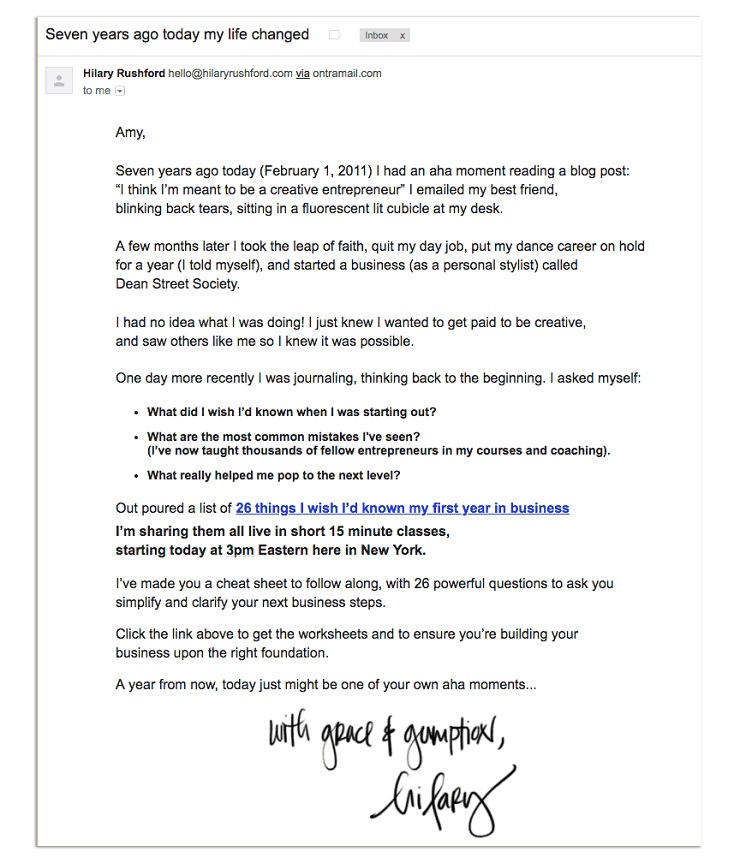
But how do you craft a personal letter that aligns with your business?
- Keep it relevant. The key is to not to get into unnecessary details about your personal life (read: oversharing). Always tie it back to how it relates to your business or your ideal customers’ frustrations.Here’s an example of how Marie Forleo does it. Notice how she includes my name in the subject line and the greeting, making it feel more personal. She opens with a story about talking to her best friend about monotony (personal), but then she relates it to why she’s changing up her video schedule (business).

- Maintain a consistent brand voice. Whether your brand is professional, quirky, irreverent, or sophisticated, make sure that comes across in the email. While it needs to be personal, it doesn’t need to be written the same way you’d write to your best friend if that’s not your brand’s voice.Here’s an example of an email from content marketing expert Brittany Berger. It’s filled with pink, GIFs, and fun language that speak to her audience of young female entrepreneurs. Even with all the lightheartedness, she brings it right back to something that provides value: her free Facebook group for solopreneurs.
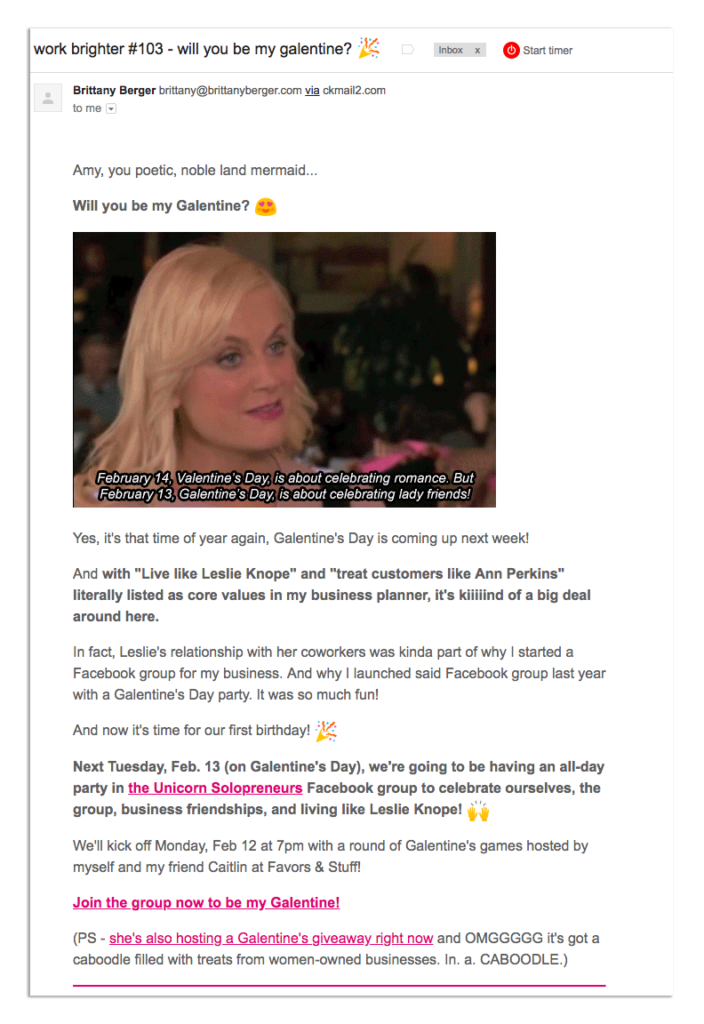
Obviously, this style won’t work for every business, but it does for Brittany’s. If you were to visit her site, you’d see the same branding (including the Leslie Knope references):
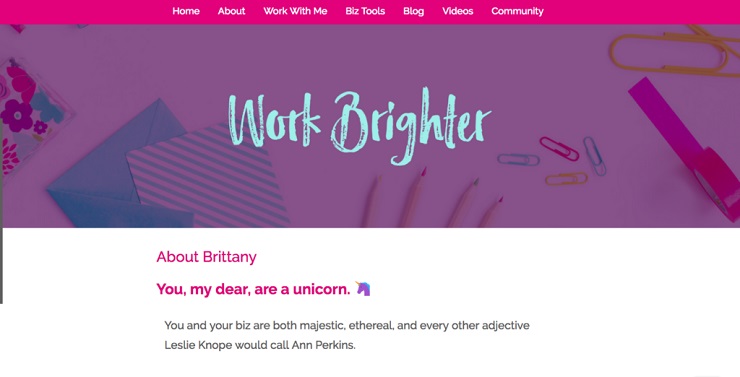
In a personal-themed newsletter, you might talk about:
- A personal story about a struggle your ideal customer can relate to
- What’s going on behind the scenes of your business
- What’s going on in your personal life and how it’s affected your business
- A problem you solved for a client that week
- The latest trends or news in your industry and your take on it
- An upcoming event you’d like to invite readers to
Get Free Instant Access To 28 Proven Marketing Strategies For Startups Here!
Industry News
If you want to establish yourself as a thought leader in a certain space, an industry news type of newsletter is perfect for your needs. This typically links to news articles and blog posts from different sources, not necessarily your own site.
AngelList sends the latest news in startup culture once a week, with opinion pieces on startup trends, announcements of recent launches, and links to resources its audience of technophiles might be interested in.

Hammer & Tusk, an online community of virtual reality enthusiasts, curates the latest VR news from around the web for its weekly newsletter.

If curating the latest content in your industry sounds overwhelming, it doesn’t have to be. I keep a running document in my iPhone Notes app, and anytime I come across an interesting read related to my field, I paste the link and any quick notes about it into the document. Then when it comes time to write my newsletter on Thursday, I don’t have to try to remember everything I wanted to tell my subscribers.
You can also use RSS feed services such as Feedly to subscribe to relevant blogs and news sites in your industry and quickly skim for the latest trending topics.
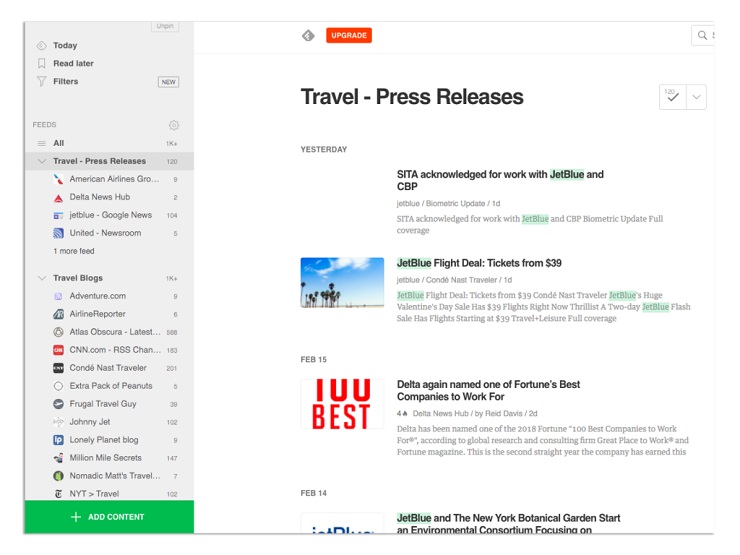
Link Roundup
Similar to the industry news style, the link roundup curates videos, articles, and blogs you personally loved and that you think your readers will love too.
A great example of the link roundup is the popular newsletter from Amy Lynn Andrews. Each week, she curates links to her own content and others that will be interesting for bloggers, freelancers, and online business owners.

If long-form content like that is overwhelming for you, try the mini-newsletter roundup. Author Jeff Goins recently introduced a mini-newsletter called “3-Bullet Thursdays” in which he shares just three links to things he’s enjoying that week.
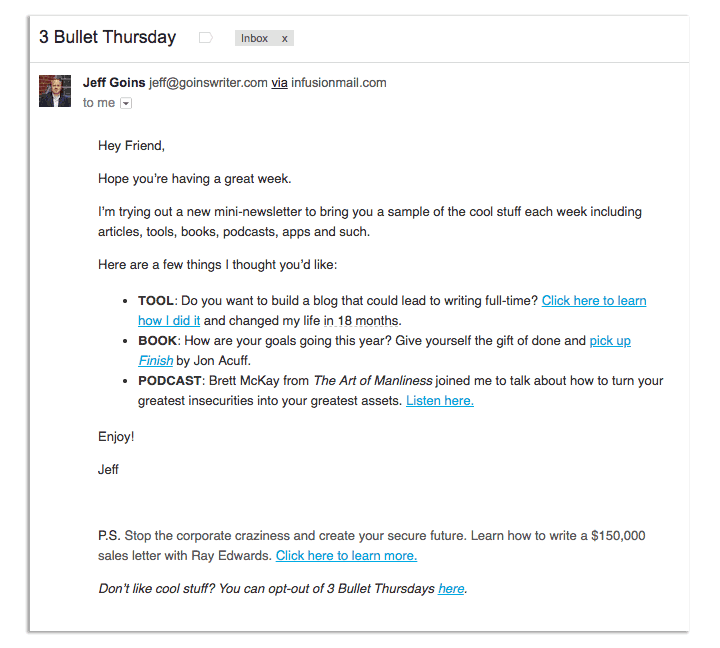
Similarly, Tim Ferriss does “5-Bullet Fridays.”
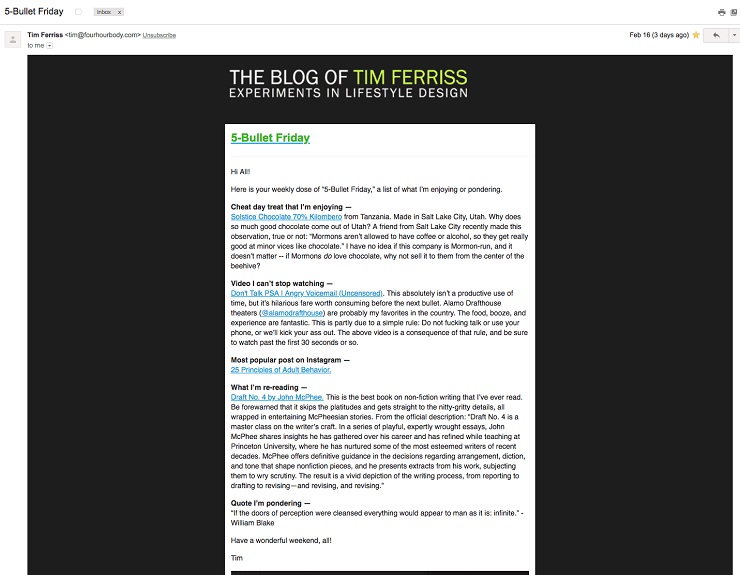
Unlike the industry news type of newsletter we talked about above, link roundups tend to come from a more personal perspective and include some commentary about the links. Notice in Tim’s 5-Bullet Friday example above, he mentions anything from a new chocolate brand he’s enjoying to a viral YouTube video about an angry customer. Your link roundup doesn’t have to be strictly business, which is why this type of newsletter works really well for personal brands.
Deals Roundup
The deals roundup works best for ecommerce sites with lots of products, and unlike the other newsletter types in this list, its purpose is obviously to sell. But it works because your subscribers are primed to expect it.
Online grocery store Brandless sends themed deals, such as this one promoting different spices sold on the site:
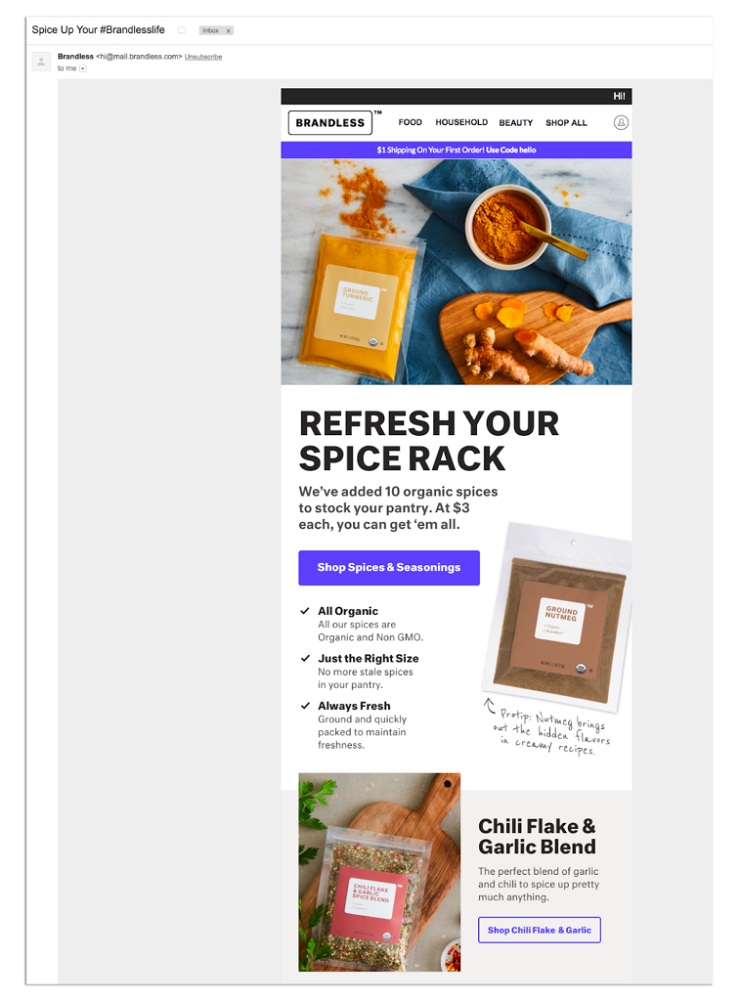
Groupon sends a daily deals newsletter that displays recommended deals based on location and purchase history.

The best way to implement the deals roundup newsletter? Pick a theme for each week, and organize your deals around that theme. For example, if you’re a travel company, you might pick beach vacations as a theme for February when you know spring break is coming up. Then you could showcase flight and hotel deals for popular beach destinations.
Get Free Instant Access To 28 Proven Marketing Strategies For Startups Here!
Blog Post Teaser
The blog post teaser newsletter includes a few sentences that “tease” your latest blog post, with a call to action to read the rest on your blog. Simple, right? But it works! Your subscribers signed up because they want to hear the latest from you. If your business has a blog, your weekly newsletter could be as simple as a brief synopsis of your latest blog post with a link to it.
Spencer Haws of Niche Pursuits does this with his newsletters; they’re short and to the point, with only one to call to action: read the blog post.

Notice how Spencer’s newsletter emails differ from his sales emails, such as this one alerting me that the doors to his membership site just opened:

Grammarly is a pro at the blog post teaser newsletter too. The template is a bit more graphics-based and includes two calls to action:
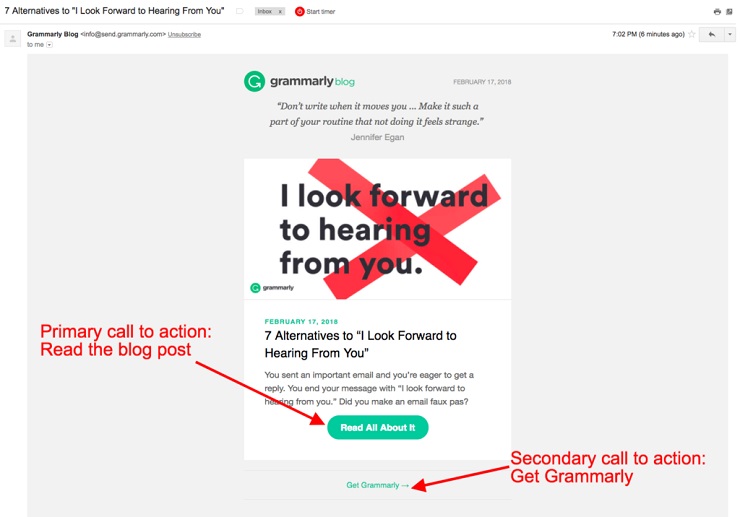
Notice how the entire content of the email is teasing the blog post, and the primary call to action is to read the rest of the post. But, Grammarly also has a secondary call to action that reminds the subscriber of its product offering.
So don’t overthink it. If none of the above newsletter types appeal to you, keep it simple and send your latest blog posts to your subscribers once a week.
5 Ways to Send Consistent Newsletters That Boost Your Business
Understand the Difference Between a Newsletter and a Welcome Series
A welcome series is the first few automated emails you send to someone who subscribes to your list; these emails introduce the subscriber to your business and give them a taste of what’s to come. Once a subscriber completes the initial welcome series, they get added to the newsletter list. You are constantly creating newsletters (weekly or monthly, for example), whereas a welcome series typically gets created once and runs automatically in the background.
Figure Out How Often You Should Email Your List
While the weekly newsletter is popular, some businesses send monthly ones, and I’m even subscribed to the list of a copywriter who sends marketing tips every single day. A 2015 MarketingSherpa survey asked 2,057 people how often they’d like to receive promotional emails from businesses. The majority (86%) said they’d like to get them at least monthly. After analyzing more than 2 billion emails, Campaign Monitor found that sending an email once every two weeks is the “sweet spot.” As with all things in marketing, it’s best to test with your own audience, but I’d recommend sending a non-promotional email newsletter no more than once per week and no less than once per month.
Implement a Newsletter System
To make sure your email marketing doesn’t take up all of your time, choose a newsletter type and create a system that you repeat each week or month.
- Create a newsletter template in your Email Service Provider. That way, you’re not creating something from scratch every time; rather, you’re simply plugging new info into a pre-existing format.
- Create an editorial calendar for your newsletters. I use Trello with its calendar power-up as an editorial calendar, and it would work well for newsletter content too. Here’s an example of what that workflow might look like:
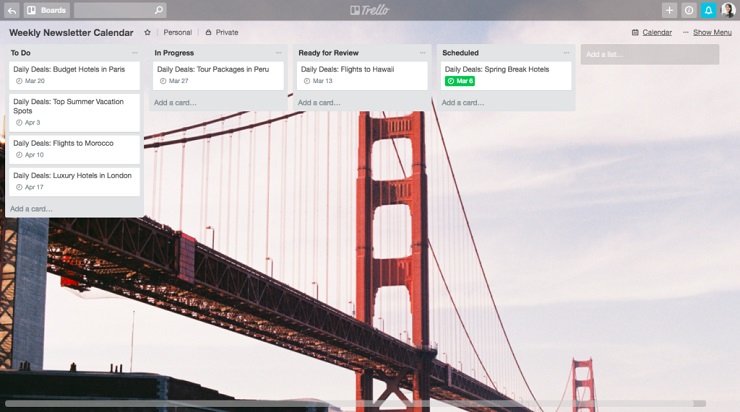
- Batch your newsletters (as much as possible). Try assigning one day a week to creating content for as many newsletters as possible.
- Schedule them ahead of time (or not). Once you’re finished batching content, you can schedule newsletters for the week or month. This may not work for everyone. For the personal letter kind of newsletter, I find it’s best for me to write it the morning I plan to send it. This helps the content feel fresher and more personal.
Integrate Your Email Service Provider With Your Ecommerce Site
This is an easy way to add a monetization piece to every email you send. By connecting your ESP with your ecommerce site, you can include suggested products at the bottom of every email based on your subscriber’s purchase history. MailChimp, for example, integrates with Shopify, Magento, WooCommerce, and more.
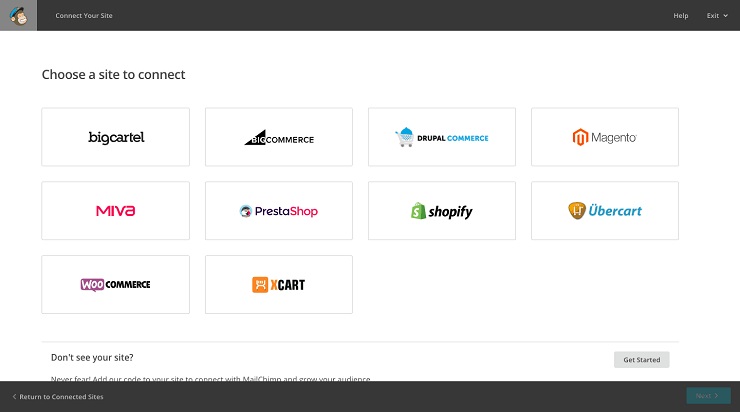
Include a Call to Action and a Link In Every Newsletter
While not everyone does this, I recommend including at least one link with a call to action in every email. Why? This trains your subscribers to click through and take action on every email they open. So instead of copying and pasting your entire blog post into an email, paste only the first paragraph or write a synopsis, and then link to the full post on your blog.
Get Free Instant Access To 28 Proven Marketing Strategies For Startups Here!
Recap: What to Send In Your Weekly Newsletters
You can use one or a combination of these email newsletter ideas:
- Personal letter
- Industry news
- Deals roundups
- Link roundups
- Your latest blog post
While it may be difficult to spend time on an email that doesn’t directly sell anything, think of the long-term value of this practice. If your subscriber knows that every email you send them is gold, they will open every email. And when it comes time to send those sales emails, they will open those too and are much more likely to convert since you’ve built a relationship with them.
Let’s think of it the way we think of any friendship. You know that one friend who only contacts you when they need your help? Yeah … don’t be that friend.
When an email from your business lands in a subscriber’s inbox, you don’t want them to cringe and think, “What are they trying to sell me now?” You want them to be excited to open it and think, “What awesome things are inside this week?”
By regularly emailing valuable content to your subscribers, you’ll be the good friend who checks in just to see how someone is doing. Consistent and compelling email marketing establishes a relationship, builds trust, and makes people far more likely to want to hear from you.
Be a good friend. Keep in touch with your subscribers!
What are some examples of your favorite business newsletters that land in your inbox? Share them with us in the comments below!



